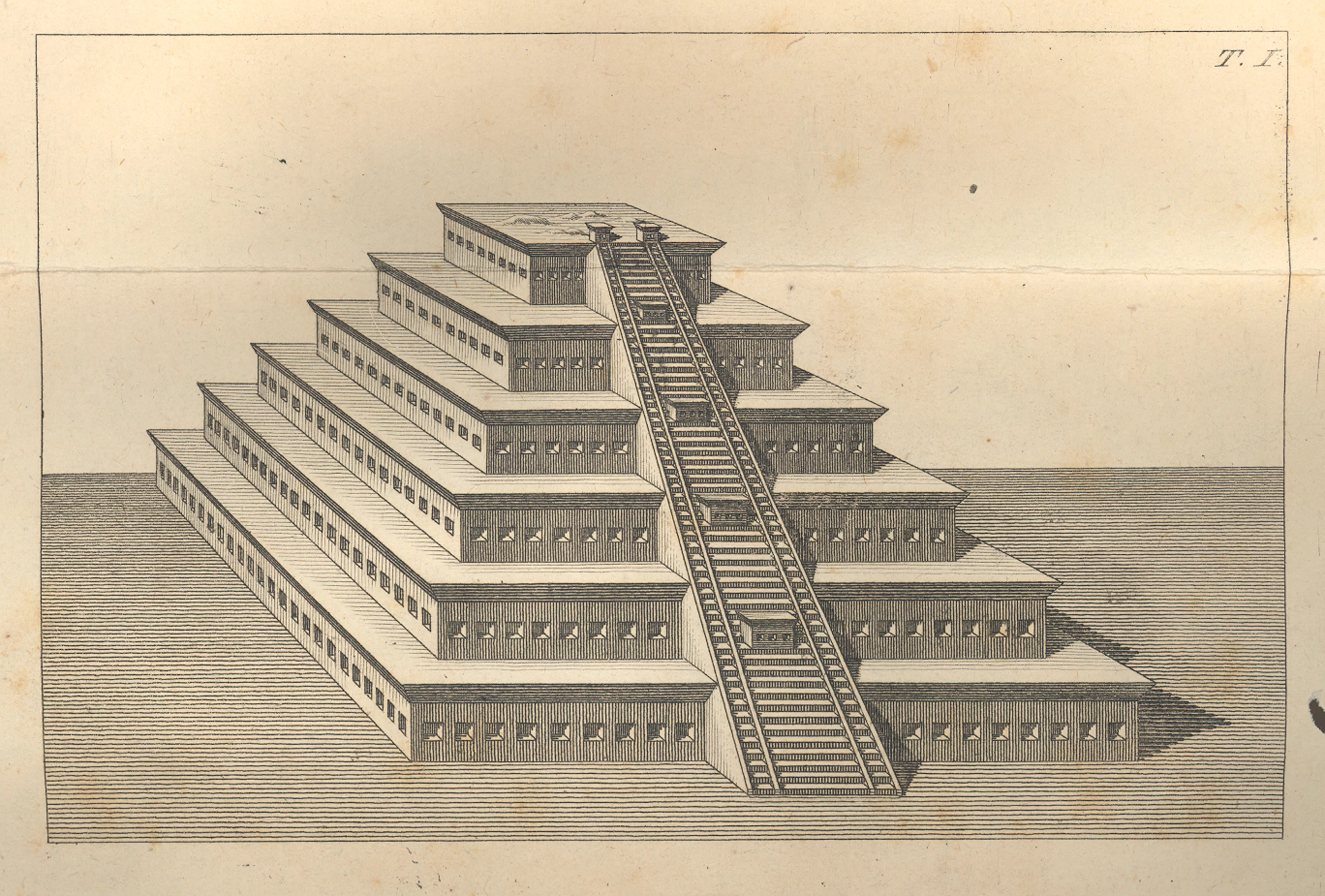Creation Date
1804
Height
11
Width
16
Medium
Genre
Description
Pedro Marquez' 1804 book contains the first scientific illustrations of Mexican archaeology to be produced in Europe. By depicting the Pyramid at El Tajin with sharp, clean angles and a lack of geographic context, Marquez sought to visually tie it to Greek and Roman temples, thus showing the technological advancement and social sophistication of native Mexican peoples. This illustration is one of four untitled plates reproduced in Due Antichi Monumenti di Architettura Messicana (1804), by Pedro José Marquez. Each plate presents a view of a structure at El Tajín or Xochicalco.
On June 25, 1767, Pope Clement XIV issued a decree suppressing the Jesuits from practicing in the Catholic Church. The order was largely ignored in non-Catholic countries, but taken quite seriously in loyal Catholic nations, particularly the Spanish Empire. As a result, all Jesuits in New Spain, the Viceroyalty of Peru, Spain, France, Portugal, and the Kingdom of the Two Sicilies were suppressed. The reasons for the suppression are a matter of debate, but it is generally agreed that it originated not in theological dispute but in political conflict, specifically the conflict arising between older trade routes and means of knowledge production—historically dominated by Jesuits—and emerging secular, Enlightenment-era nation-states. For Pedro José Marquez, the ironic result was that he was forced to flee Mexico to Rome, where he was then able to publish his re-interpretations of Alzate’s work (exposing his own writing to European audiences for the first time).
The pyramid at El Tajín is shown in three-quarter view. It is a step-pyramid with six levels and a staircase leading from the ground to the top platform. The sky is blank over a completely flat horizon. The ground is represented by a continuous series of receding vertical lines.
Associated Works
Locations Description
El Tajín is the largest and best-preserved city of the Classic Veracruz civilization in what is now Mexico. The modern-day archaeological site of El Tajín is located about 150 miles north of Veracruz, Veracruz, Mexico. Construction at El Tajín began around the first century CE, and reached its height 600-900 CE. It was completely abandoned at the time of the Spanish conquest in the sixteenth century. In New Spain, the site was first described in detail by José Antonio Alzate in 1791; his findings were later re-published in Europe by Pedro Marquez in Rome (1804). The Pyramid of the Niches, the largest structure at El Tajín, was the focus of a number of travel accounts and archaeological illustrations during the late eighteenth and early nineteenth century, most notably in Marquez's Due antichi monumenti di architettura messicana (1804) and in Alexander von Humboldt's Vues des Cordillères: et monumens des peuples indigènes de l’Amérique (1816). The site was inscribed as a UNESCO World Heritage Site in 1992.
Copyright
Copyright 2009, Department of Special Collections, Memorial Library, University of Wisconsin-Madison, Madison, WI
Accession Number
G95 D85 Cutter
Additional Information
Bibliography
Cañizares-Esguerra, Jorge. How to Write the History of the New World: Histories, Epistemologies, and Identities in the Eighteenth-Century Atlantic World. Stanford: Stanford UP, 2001. Print. Cultural Sitings.
Herbermann, Charles G., et al, ed. The Catholic Encyclopedia. Vol. 1. New York: Encyclopedia P, 1913. Print.
Humboldt, Alexander von. Vues Des Cordillères: Et Monumens Des Peuples Indigènes De L'amérique. 2 vols. Paris, 1816. Print.
Humboldt, Alexander von, et al. Vistas De Las Cordilleras Y Monumentos De Los Pueblos Indígenas De América. 2 vols. México, D.F.: Smurfit Cartón y Papel, 1995. Print. Hombre y sus obras. Biblioteca Humboldt.
Keen, Benjamin. The Aztec Image in Western Thought. New Brunswick: Rutgers UP, 1971. Print.
Marquez, Pedro. Due Antichi Monumenti Di Architettura Messicana. Roma: Presso il Salomoni, 1804. Print.
Wilson, James Grant, and John Fiske, ed. Appleton's Cyclopædia of America Biography. Vol. 4. New York: Appleton, 1888. Print.

